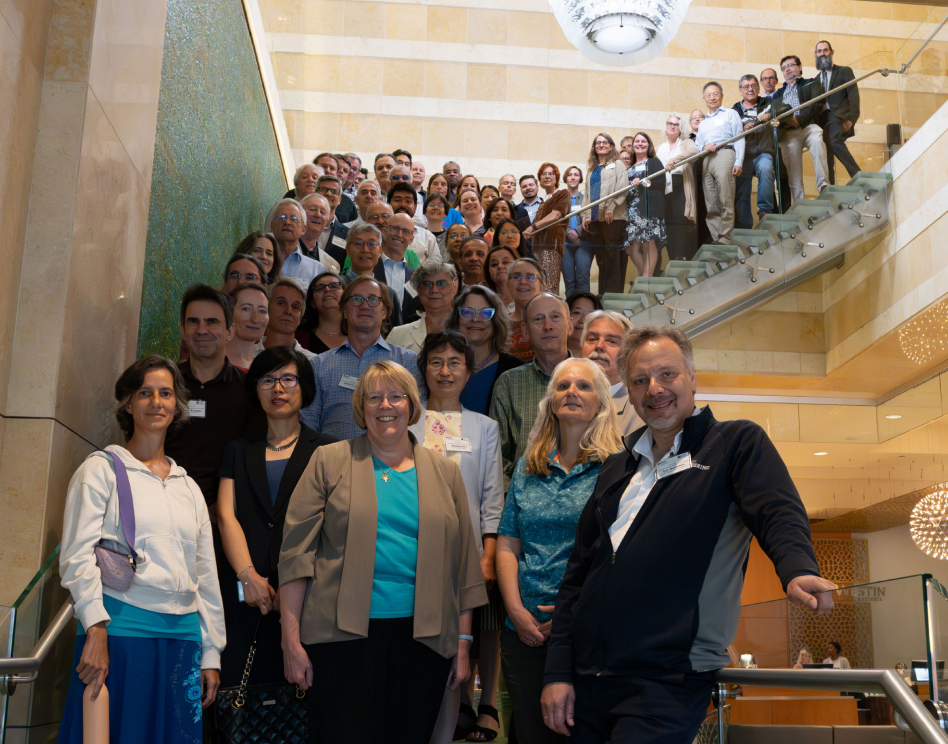
The Texas A&M University and Bryan-College Station communities are invited to participate in nuclear science history on Friday, Oct. 6 — the date marking the nationwide rollout of the Nuclear Science Advisory Committee (NSAC) 2023 Long Range Plan for Nuclear Science.
Texas A&M is one of 21 sites selected to host hybrid rollout events following the NSAC’s approval and release earlier this week of A New Era of Discovery: The 2023 Long Range Plan for Nuclear Science. The document, which is the eighth long range plan published by the NSAC since 1979, provides a roadmap for advancing the nation’s nuclear science research programs during the next decade.
Friday’s rollout event, set for 1 p.m. in Room 228 of the Cyclotron Institute, will be facilitated by Dr. Grigory Rogachev, professor and head of the Department of Physics and Astronomy and Cyclotron Institute member. The hour-long meeting will feature a welcome from Associate Vice President for Research Dr. Henry Fadamiro and a webinar update from NSAC Chair and Old Dominion University Dean of the College of Sciences and Professor of Physics Dr. Gail Dodge, followed by a brief question-and-answer segment moderated from Washington, D.C. by Texas A&M Distinguished Professor and Regents Professor of Chemistry and Cyclotron Institute Director Dr. Sherry J. Yennello. Rogachev will conclude the meeting by providing context regarding local impacts of the plan and the expected role the Cyclotron Institute and the Texas A&M nuclear science program will play in its implementation during the coming decade.
“Nuclear physics can and does deliver science, technology and people for the nation," said Yennello, who holds the Bright Chair in Nuclear Science within the College of Arts and Sciences at Texas A&M. "The vision laid out in this Long Range Plan will lead to a greater understanding of the world in which we live while also enabling both technology and technically trained innovators to create a better society for us all."
The NSAC is chartered under the Federal Advisory Committee Act and jointly reports to the director of the Department of Energy (DOE) Office of Science and assistant director of the National Science Foundation (NSF) Directorate for Mathematical and Physical Sciences. The committee is composed of 20 members who represent a range of subject matter expertise in nuclear physics.
Every five to eight years, the NSAC is tasked by the DOE and NSF as the two primary funders of the nation’s nuclear physics research program with developing a plan based on input from the nation’s nuclear science community in order to ensure the U.S.’s ongoing leadership in nuclear science.

According to the NSAC’s Oct. 4 announcement, the 2023 plan highlights the scientific opportunities of nuclear physics today to maintain world leadership in the context of four different budget scenarios while also detailing progress made since the last long range plan. The document also describes the impact of nuclear science on other fields along with applications of related research benefiting society.
Yennello and Rogachev are two of several Texas A&M faculty as well as both current and former Cyclotron Institute-affiliated researchers who have been working for the past year on various aspects of the 2023 plan. Yennello served as chair of the budget subcommittee and a member of the writing committee. In addition, she and two other subcommittee chairs joined Dodge earlier today at NSF headquarters to brief NSF administrators on highlights of the plan.
For his part, Rogachev served as a convener for a town hall that resulted in one of the plan’s four white papers, while Cyclotron research scientist Dr. Alan McIntosh organized one of the town hall sessions, as did Yennello.
For more information about the process or to read the plan or any of the related white papers, visit https://nuclearsciencefuture.org/
Learn more about nuclear science in the Yennello Group or the NSAC.
See an archived recording of Dodge's Oct. 6 webinar.
